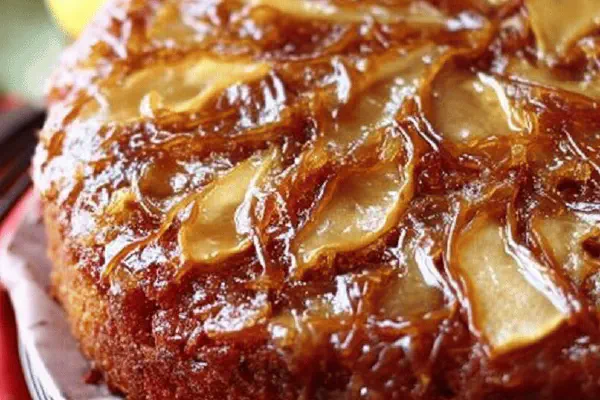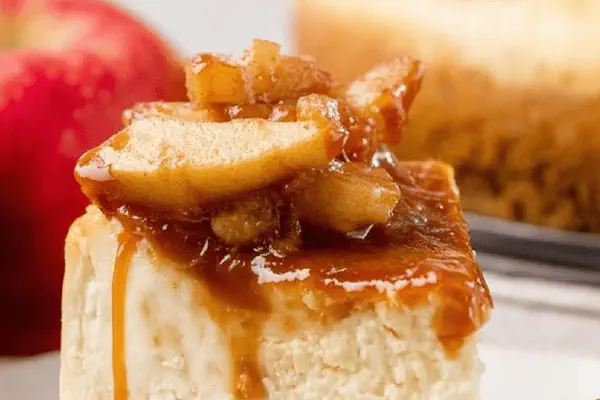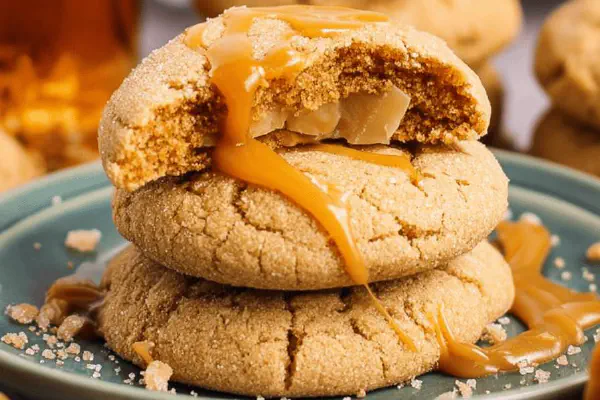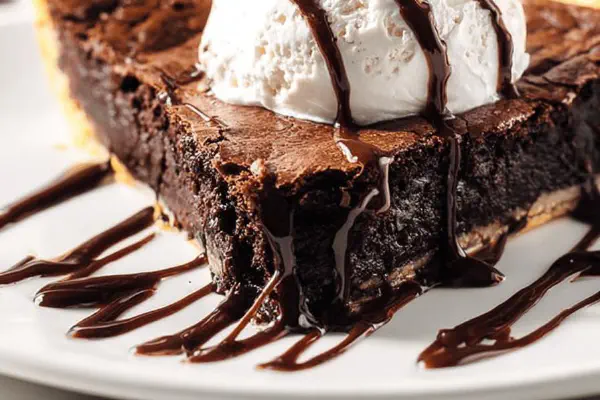Caramel Apple Upside Cake

By Emma
Certified Culinary Professional
Ingredients
- 1/3 cup (5 1/3 tbsp) unsalted butter
- 3/4 cup packed light brown sugar
- 3 large apples, peeled, cored, sliced thin
- 1 box yellow cake mix, about 15.25 oz
- 2 large eggs
- 1/2 cup melted unsalted butter
- 1 1/4 cups water
About the ingredients
Method
- Heat oven to 320 F. Melt 1/3 cup butter in a well-seasoned 10-inch cast-iron skillet over medium. Add brown sugar; stir constantly until caramel smooth, bubbling thickly. Watch for slight bubbling around edges—not burning. Remove from heat promptly or caramel will darken too much.
- Arrange apple slices over caramel in overlapping rows, layering as you see fit. No need for perfection, just complete coverage. Apples release juice in the oven, cooking gently in caramel bath without becoming mushy.
- In a large mixing bowl whisk cake mix, eggs, melted butter, and water until smooth but don’t overbeat or you’ll toughen the crumb. The melted butter gives a richer texture than oil alone—don’t skip.
- Pour batter evenly over the apples in skillet. Batter will look thick but spreads during baking—resist poking or spreading manually.
- Bake 40 to 53 minutes or until edges pull slightly from skillet and toothpick inserted near center comes out with a few moist crumbs but no wet batter. Visual: top should gain golden hue, slightly puffed but not cracked.
- Let sit 5 min after removing from oven to firm up base and avoid caramel spill. Keep a sturdy plate or cutting board ready for inversion.
- Invert skillet onto plate swiftly—expect some caramel run-off; that’s normal, embrace the mess. Let cool a bit more before slicing to keep apples intact.
- If caramel sticks during inversion, run a thin knife around edges before flipping next time or brush skillet edges with neutral oil before starting caramel step.
Cooking tips
Chef's notes
- 💡 Caramel step demands attention—heat just right medium so sugar melts slowly, bubbles appear at edges, thick but not dark then pull off stove fast. Too hot, caramel burns bitter. Keep stirring steady, aroma shifts from sharp sugary smell to deep buttery scent. Timing matters here; wait for caramel to thicken but don’t wait past amber color Tips: watch bubbles size, edges first, color shifts slowly.
- 💡 Apples sliced thin but not paper thin; around quarter inch best. Thinner means soft mush, thicker means undercooked center. Overlapping apples create natural syrup bath when baked. Juice seeps out, blends with caramel, keeps fruit tender without soggy. Layer unevenly no problem. The benefit of cast iron skillet, holds heat constant, helps apples cook evenly but grease edges well to avoid burnt caramel sticking.
- 💡 Batter consistency tricky. Melted butter plus water replaces oil alone, richer mouthfeel. Whisk but don’t overbeat–mix smooth but lumpy batter toughens crumb. Pour gently onto apple layer. Batter will look thick like pudding, bake spreads it. Resist poking. Bake 40–53 min but start toothpick check at 38 min. Visual cues: edges shrink just off pan, top puffs but doesn’t crack, color golden warm.
- 💡 Flipping step needs patience; cool five minutes minimum or base sticks, spills caramel mess. Use firm plate larger than skillet, quickly invert skillet over plate, some drip normal. Knife run around edges before baking reduces caramel glue traps, helps flip smoother. Brushing pan edges with neutral oil before caramel prevents stuck parts. If caramel sticks badly next time, try smaller heat for sugar melt or more salt butter balance reduces stickiness.
- 💡 Substitutions versatile. Butter can be coconut oil or ghee for different aroma textures, adjust sugar slightly if using pears or firm peaches instead of apples–fruits differ in sweetness water quantity may vary to keep batter thick. Cake mix quick but homemade cake batters work, expect longer mix time. Skillet heavy, but ovenproof pan fine. Just grease well, watch caramel darken faster on thinner pans.
Common questions
How to prevent burnt caramel?
Medium rather than high heat. Sugar melts, bubbles at edges tell you when to pull off. Stir constantly no breaks. Dark amber color just before removes. Remove quick or bitter burnt notes. Watch edges carefully not center only.
Can I swap apples with other fruits?
Yes pears or firm peaches work good. Adjust sugar a bit down since pears sweeter. Texture changes though, pears soften less. Slices thickness same. Try firm fruits only or baking outcome tougher, may absorbs more moisture.
What if batter too thin or thick?
Thin batter lets apples float, cake dense and gummy. Thick batter spreads slow but thick cake, sometimes undercooks inside. Water affects thickness, melted butter gives richness. Test by pouring if runny add mix. Thick feel desirable but don’t overbeat.
How to store leftovers?
Cover airtight fridge. Can keep 3 to 4 days. Rewarm in oven 300F few minutes to revive caramel crust. Freezing possible wrapped well but caramel texture changes, can separate. Real talk—best is fresh but cold cake still tasty.



